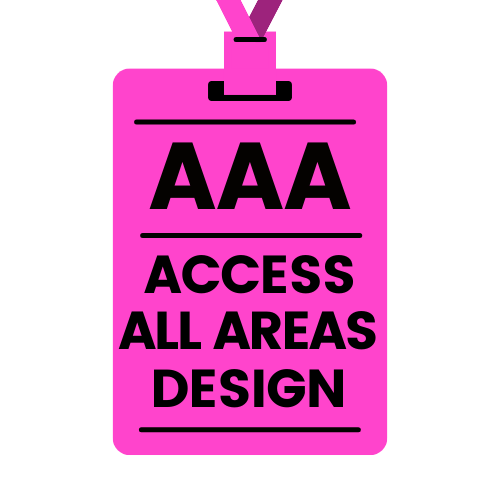BUILDING TOGETHER: THE HIDDEN POWER OF CO-DESIGN

Recognised as the greatest American architect of all time, Frank Lloyd Wright only designed one building for a client with a disability: Laurent House. In 1948, war veteran Kenneth Laurent wrote to Wright asking him to create a home: “I am paralyzed from the waist down and by virtue of my condition, I am confined to a wheelchair. This explains my need for a home as practical and sensible as your style of architecture denotes.”
Kenneth wrote down everything he’d need in a home to make his life easier. He sent Wright a two-page letter outlining everything he could think of – wider doors, lower light switches, and doorknobs and no elevation changes. He wanted to change direction without needing to back up his wheelchair, or “inconveniencing guests to rise and move their chairs and furniture to allow passage.”
The letter was what Wright used to begin designing the house, which, unusually for him, resulted in a very close collaboration with the Laurents. But Wright recognised that only Kenneth could tell him what his specific needs were before he could begin his design process to address them.
In a letter from Matthew Walzer, a teen with cerebral palsy, to the CEO of sportswear giant Nike, he wrote “My dream is to go to the college of my choice without having to worry about someone coming to tie my shoes every day. At 16 years old, I am able to completely dress myself, but my parents still have to tie my shoes.” The response was a design collaboration with Nike to create the adaptive FlyEase shoe, an easy-to-put-on and take-off zipper and strap-designed athletic sneaker released in 2015.

What do these things have in common? These are just two examples of co-design, in which people with lived experience participate in the design of buildings, the built environment, and products. It refers to a participatory approach to creating products, services, or solutions where designers work closely with the people who will use them and who are treated as equal collaborators. Instead of designing for users, co-design involves users as active participants in the design process, ensuring that their needs, ideas, and feedback shape the outcome.
The benefit of co-design is that it ensures diverse perspectives, particularly those with lived experiences, are considered. This leads to more inclusive, user-centred designs that better meet the actual needs and preferences of all users, and reduces the risk of costly redesigns.
However, not all instances of collaboration and co-design are as successful as they first seem. The contributions of people from marginalised groups are sometimes recognised during the design phase, only to be erased or diminished in later stages when the final product or structure is released; or feedback is not consistently incorporated into the final design decisions, leading to a building or product that does not fully reflect their needs.
In 2019, the Hunters Point Library in Queens, New York, opened, showcasing an ambitious design with its dramatic tiers and zigzagging stairs. It was praised as one of New York’s most inspiring public buildings in years. That was until disability advocates pointed out that the stairs and tiers were inaccessible to wheelchair users and people with mobility issues. City officials defended the design, stating it met ADA (Americans with Disabilities Act) regulations, effectively pointing at the law itself. Would the unwelcoming design of the building be different if co-design principles had been implemented from the beginning?

Honeycomb Access & Design recently partnered Flying Fox participants with intellectual disability with Master of Architecture students to design a universally accessible public space such as a library, café, or store. Students were tasked with designing a universally accessible public space in collaboration with a design partner who has lived experience of disability, imagining a space their partner might use, prioritising requirements, and designing through the lens of disability. As paid design partners and collaborators, Paris, Guy, Claudia, Sebastian, Brenton, Mitchell and Grace worked one-on-one with the students to share their lived experiences as people with intellectual disability and how they navigate public spaces.
The Koorie Heritage Trust (KHT) is a First Peoples arts and cultural organisation in Melbourne’s Fed Square. Its recent expansion to occupy all three levels of its building is a great example of design collaboration between KHT and other stakeholders. First Peoples architect, Jefa Greenaway of Greenaway Architects when discussing the project said “This is a collaborative opportunity where we’ve worked very closely with the KHT, engaging with the community as well… Greenaway Architects as the Cultural design lead, worked very closely with Lyons Architecture as well as Architecture Associates, we embedded this idea of design equity and understanding Indigenous design leadership is actually a really important and integral part of the experience and certainly understanding that this is Reconciliation at scale. This is what ‘Yes’ looks like, this is what really communicating the power of Indigenous design thinking as informing some of these really integral cultural spaces here in Melbourne.”

By consulting with and acknowledging the people who the product or space is designed for, and valuing their input, the design becomes more inclusive and successful. Co-design leads to more relevant and user-friendly designs, sparks creativity through collaboration, and builds a sense of ownership among participants. And because it is more likely to meet real needs and preferences, it can lead to greater user satisfaction, and result in better, more inclusive outcomes that people are excited to use.
Frank Lloyd Wright referred to Laurent House as his “little gem” and selected it for his book that showcased the 35 most significant buildings of his 70+ year career. From 1952 until 2012, Ken and Phyllis Laurent lived in and loved the remarkable space Wright built for them. They lived there independently until they were in their 90s.
“Every morning for 60 years, I would come out of my bedroom and pause in the doorway, sitting in my wheelchair, to look down the window wall, I’d take in the beauty that Wright designed, seeing both the indoors and outdoors, as if there were no barriers. That scene allowed me to forget about my disabilities and focus on my capabilities.” Kenneth Laurent
